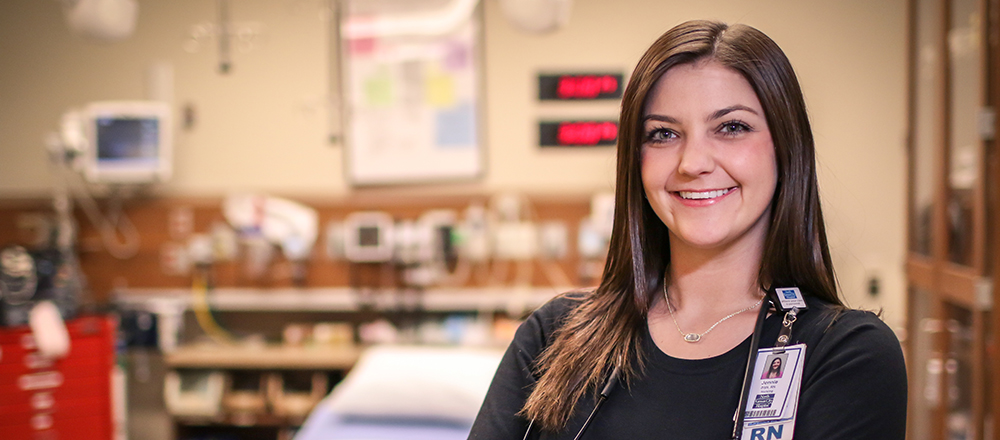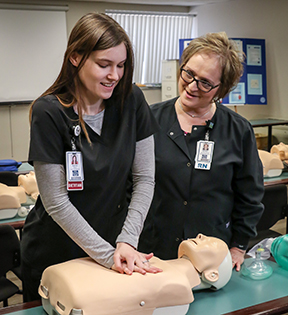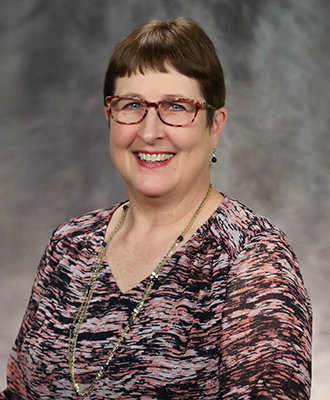
Within a day of each other in February, NKCH employees Rachel Fossey, RD, LD, and Jennie Schwabe, BSN, RN, became first responders to emergencies outside the hospital. Their quick actions in life and death situations made a difference for two people.
Quick Thinking
As a dietitian, Rachel, 25, typically uses nutrition support and diet education to save lives. On February 22, with her gas tank near empty, Rachel stopped to fill up at a Quik Trip on Blue Parkway in Lee’s Summit. It was there she witnessed a horrific accident. Another driver had backed into an elderly gentleman as he walked toward the store. “I kept thinking she was going to stop, but she didn’t see him. He was halfway under her car when a bystander knocked on her window to stop,” Rachel remembered.
Rachel ran toward the motionless man and checked for a pulse. There wasn’t one. “At that point, I thought this is it. I need to do CPR,” Rachel recalled. “I did chest compressions for about a minute before he opened his eyes and took a deep breath. I was in tears and so relieved.” The CPR skills she learned months earlier at NKCH helped save a life.
The car tires missed him, but he fell forward hitting his face on the car. Then, he knocked his head on the ground. Blood poured from his chin, nose and hand. Rachel and another gentleman did what they could to stop the bleeding.
When emergency responders arrived, Rachel gladly stepped aside, so the man could be transported to the hospital.
Rachel is the first to admit that life and death situations are unusual for a dietitian. But, working in a hospital anything is possible.
In fall 2017, Rachel and her coworkers requested CPR training in case they encountered a patient who might need help. That training prepared her to save a life that February evening. “I am still in disbelief that it happened. It seems like a dream, but I am glad I was there to help,” she said.
Like many people who receive CPR training, the hope is that someone else will be there to help. On that day, it was Rachel who made the difference for one lucky man.
Nursing Care on the Highway
Just one day earlier on February 21, ED Nurse Jennie Schwabe, only eight months on the job, jumped into action. She had just completed the first day of a trauma course and was headed home on I-29 South. With traffic slowing, she remembered seeing a flash go by her car, and then smoke and people running on the highway. She moved out of traffic and saw a car flipped upside down and two other cars involved in the crash. Luckily, two of the three drivers involved were able to get out of their cars except the man in the overturned car who was unconscious. Deployed airbags restricted Jennie’s access to the man until bystanders broke a window and unlocked a door.
As an ED nurse at a Level II trauma center, Jennie is used to sophisticated equipment and having the appropriate supplies available. On the interstate, she only had her assessment skills and a blanket. She instructed bystanders to leave the motorist in the car to prevent any further injuries. She checked his cognitive function by poking his fingernail bed. No response. Nothing she tried woke the driver. Eventually, he regained consciousness and started to breathe normally.
Emergencies outside the hospital seem to follow Jennie. Just this past summer on a celebratory trip to Branson after passing her nursing boards, Jennie and her family came upon an accident. Jennie approached the car and found an unresponsive elderly driver. With no pulse detected, she began chest compressions. But, it was too late. Jennie suspected he died of a heart attack before she arrived.
“The main reason I became a nurse was to help people, so whether it’s in a hospital or somewhere else, it’s my responsibility and obligation to help,” said Jennie. With a mother who is a physician, a father who works as a trauma nurse and a brother enrolled in medical school, anyone is in good hands with Jennie and her family.




